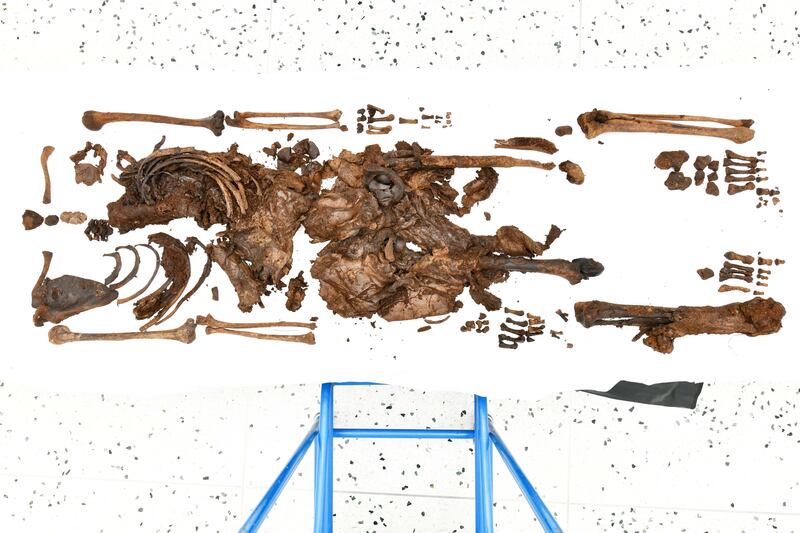Seamus Heaney would have been fascinated by the discovery of an ancient bog body in the part of Co Derry made famous by his poems, those involved in the find believe.
The remains, which are estimated to be between 2,000 and 2,500 years old, were discovered near the poet’s home place of Bellaghy in October and were revealed to the public on Thursday.
“Seamus Heaney, when he was writing his series of poems inspired by bog bodies, probably never expected such a find on his own doorstep,” said John Joe O’Boyle, chief executive of the Forest Service, which owns the land where the bog body was discovered.
“It certainly adds an important chapter to the historical and cultural significance of this hinterland and archaeological discoveries of bog bodies across Europe,” he added.
What will €180,000 buy in France, Germany, Montenegro, Spain and Limerick?
‘Why must we fight for our children’s basic rights?’ – Parents sleep out over lack of school places for pupils with special needs
How the Tate brothers won US backing for their release
Malachy Clerkin: Manchester United’s woes will turn the spotlight on Ruben Amorim before long
The remains were discovered after the presence of human bones on the surface of the bog was reported to the Police Service of Northern Ireland (PSNI).
Det Insp Nikki Deehan said police were initially unsure “if the remains were ancient or the result of a more recent death”, and it was therefore excavated “with full forensic considerations” in case evidence was needed for a potential criminal investigation.
“Ultimately this wasn’t the case in this instance,” she said.
The excavations first uncovered a tibia and fibula, and a humerus, ulna and radius bone relating to the lower left leg and right arm respectively. Further investigation revealed more bones belonging to the same individual.
About 5m south of the surface remains, the bones of a lower left arm and a left femur were located protruding from the ground. Further examination led to the discovery of additional finger bones, fingernails, part of the left femur and the breastbone.

The skeleton was well-preserved, and partial skin, fingernails of the left hand, toenails and possibly a kidney have also survived.
A postmortem carried out by a forensic anthropologist determined the remains were possibly those of a 13 to 17-year-old male.
[ What violent secrets do ancient bog bodies hold?Opens in new window ]
Det Insp Deehan said the good condition of the boy’s body meant radiocarbon dating could be used to ascertain when he died, the first time the technology has been used on a bog body in Northern Ireland.
Radiocarbon dating carried out at the 14Chrono Centre, part of Queen’s University, Belfast (QUB), placed the time of death to approximately 500BC.
Little is known about the boy’s cause of death, but Dr Alastair Ruffell from QUB said the remains were discovered “among a cluster of fossil tree remains suggesting that the body may have died or been buried in a copse or stand of trees, or washed in”.
He said two phases of “high-resolution ground-penetrating radar survey” were carried out at the site to ensure “the highest possible standards in forensic recovery of human remains were maintained”.
The body is to be transferred to National Museums NI for further examination and preservation.
- Sign up for push alerts and have the best news, analysis and comment delivered directly to your phone
- Find The Irish Times on WhatsApp and stay up to date
- Our In The News podcast is now published daily – Find the latest episode here












